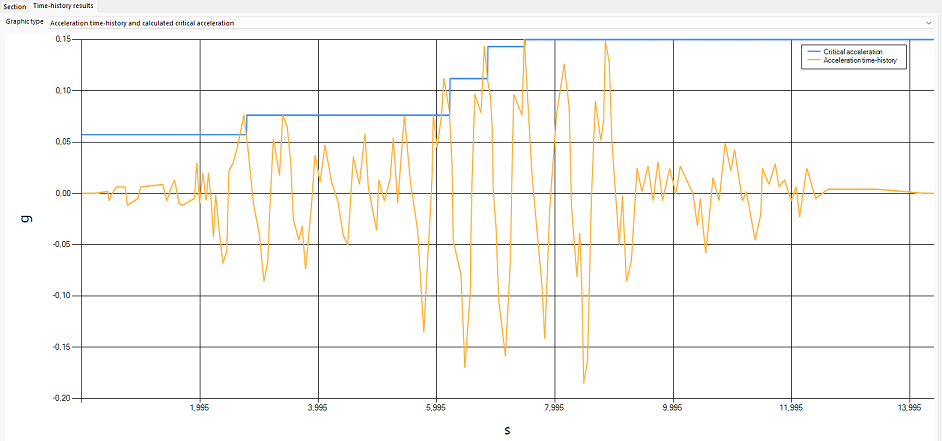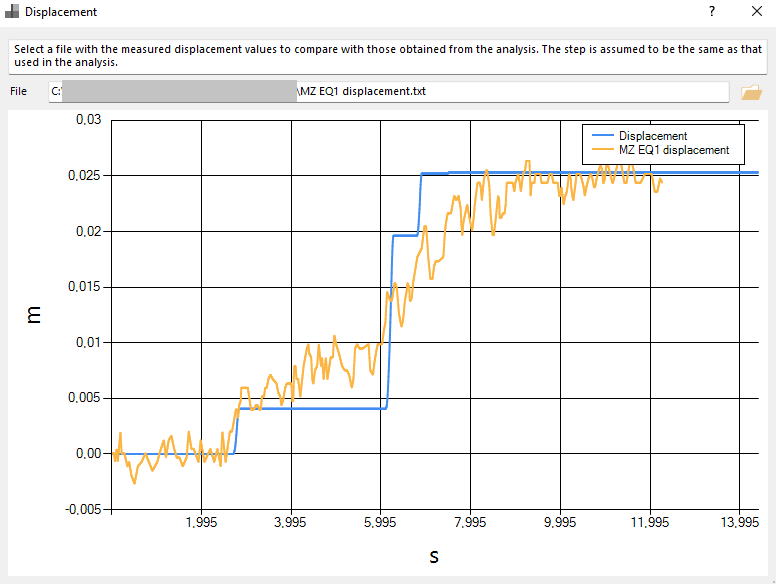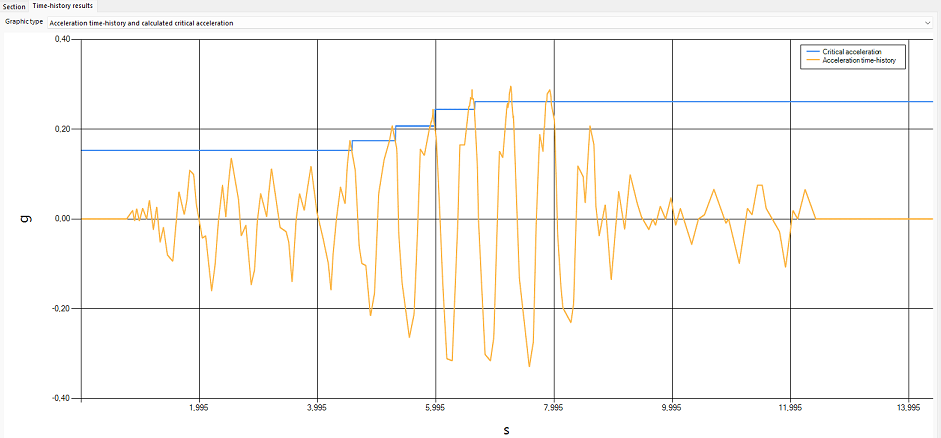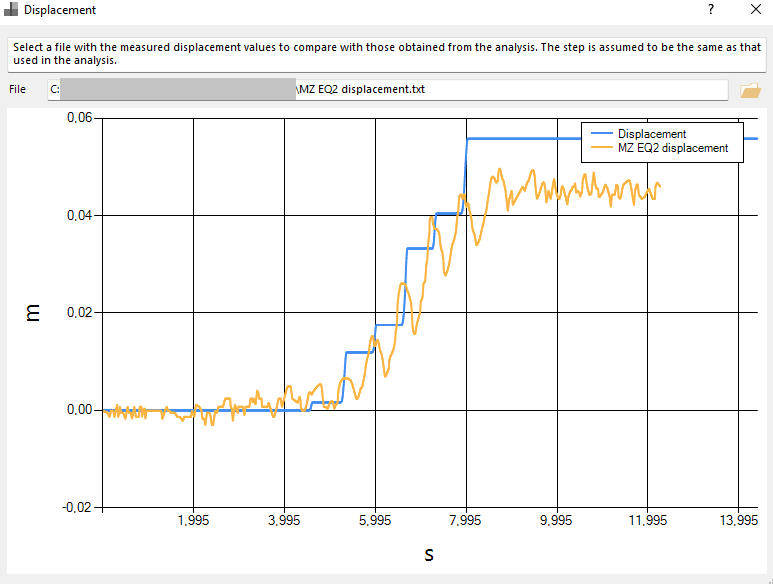DReW Seismic allows the prediction of the earthquake-induced permanent displacement of cantilever retaining walls. To this purpose, the method developed by Conte, Pugliese and Troncone (2022) is employed. This method has been validated by means of comparisons with the results of both experimental tests and advanced numerical simulations. A good agreement is found for any considered case, as documented here.
However, a worked out example is shown in this section, for the sake of completeness. Specifically, DReW Seismic is employed in the following to analyze the experimental case study documented by Madabhushi & Zeng (2006). This case concerns an embedded cantilever retaining wall characterized by an excavation height H = 7.20 m and an embedment depth D = 7.20 m. The wall consists of an aluminum diaphragm with a thickness B = 0.264 m and a unit weight γwall = 27 kN/m3. The wall is built in a homogeneous soil consisting of a dry sand with the following parameters: unit weight γ = 16.4 kN/m3, angle of shearing resistance φ = 34° and a friction angle at the wall-soil interface δ = 12°.
The wall was subjected to two consecutive earthquakes, named EQ1 and EQ2, respectively. The files .txt containing the acceleration time-history of these events, as well as those corresponding to the recorded displacements, can be downloaded from the following link. These files contain only one column with the values of acceleration or displacement. The corresponding time step is 0.005 s.
The above-indicated parameters are input following the procedure explained in this section. Afterwards, the calculation is performed. Specifically, two analyses are performed, each for any considered earthquake.
In the first analysis the earthquake EQ1 is considered. As the wall had been previously subjected to further vibrations, the initial critical acceleration is first calibrated by matching the calculated displacement time-history with the recorded one by a trial and error procedure. The resulting value of critical acceleration is 0.56 m/s2. The comparison between the acceleration time-history and the calculated critical acceleration and the comparison between the displacement time-history provided by DReW Seismic and the measured one are provided in the following figures.

Comparison between the acceleration time-history given as input and the critical acceleration calculated by DReW Seismic, for earthquake EQ1

Comparison between the experimental displacement time-history (orange curve) and that calculated by DReW Seismic (blue curve), for earthquake EQ1
The earthquake EQ2 is considered in the second analysis. As this earthquake hit the wall after EQ1, the initial value of the critical acceleration is taken equal the the maximum value of acceleration recorded during EQ1, acting towards the excavation (i.e., among the positive values). This results in a value of 1.5 m/s2. The comparison between the acceleration time-history and the calculated critical acceleration and the comparison between the displacement time-history provided by DReW Seismic and the measured one are provided in the following figures.

Comparison between the acceleration time-history given as input and the critical acceleration calculated by DReW Seismic, for earthquake EQ2

Comparison between the experimental displacement time-history (orange curve) and that calculated by DReW Seismic (blue curve), for earthquake EQ2
As can be seen, DReW Seismic provides a satisfactory prediction of the earthquake-induced permanent displacement of embedded cantilever retaining walls, by using a very simple to use calculation method.